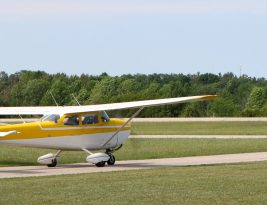Before reading today’s post, go back and re-read our post on airplane stability from earlier this month. As promised, we’ll talk today about how static and dynamic stability applies to you as a pilot. We’ll pick up where we left off in Bill Kershner’s The Advanced
…Blog Posts
IMSAFE, the not-so-subtle-phrase within the acronym. I think by this point in your training you have probably begun to realize that aviation is flooded with acronyms and abbreviations for a myriad of things. PAVE stands for Pilot, Aircraft, Environment, and External Pressure and is an essential risk management tool that
…We tend to think of piloting an airplane as a physical skill, but there is much more to it. The pilot must assemble information, interpret data, assess its importance, make decisions, act, communicate, correct and continually reasses. Over time, all of this contributes to fatigue. Today on the Learn to
…Obtaining a weather briefing in my opinion is one of the single most important parts of any pre-fight. Whether you plan on conducting a flight in the vicinity of an airport or are heading out on a 100 NM cross country trip, having current and updated weather information is crucial
…There’s a lot of weather information available to pilots, most of which we’ve already talked about. Here’s what Bob Gardner recommends you do with all of it in his textbook The Complete Private Pilot. And we recommend you bookmark these links!
Self-brief first, to get the big picture before
…It’s official! Final versions of the Airman Certification Standards (ACS) for Private and Instrument Pilot Airplane have been published and will go into effect in just a few days (June 15th, 2016). These new ACS will replace the Practical Test Standards. The anticipation has been building for
…Today, we’ll introduce airplane stability. As you’re well aware of by now, there are three axes around which the airplane moves (yaw, pitch, and roll). These axes pass through the airplane’s center of gravity, or the point where the airplane weight is considered to be concentrated. An airplane that is
…Drones, yes drones. A very common term you hear these days, they just seem to be everywhere (LITERALLY)! As a matter of fact there are actually more registered drone operators then there are aircraft pilots. This is pretty astonishing, particularly when you put into perspective just how new of a
…

